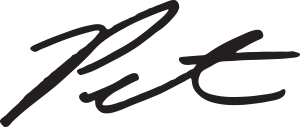Designing Your Ideal Day to End the Chaos
Designing Your Ideal Day to End the Chaos
Managing our time and energy has – and always will – be critical to our success in almost all aspects of our lives. Leaders and managers especially need to proactively “change the game” and establish a new model for better time management.
A lack of time (and inability to effectively manage time) is not only holding many of us back from taking advantage of new opportunities, it’s hurting us individually and organizationally.
“The number one reason most often expressed to me in planning and development work for not taking advantage of new opportunities is a ‘lack of time’.”
— Peter C. Atherton, P.E.
We have the power right now to better manage our time, and as leaders and senior managers, a “lack of time” can no longer be an excuse for not doing what needs to be done or not investing in what needs to be invested in, because:
- We all have the same 24 hours in a day, and we make time for what we value or what we are “valuing.”
- In the eyes of top talent and clients, constantly being busy and consumed is not a “badge of honor”. In fact, it’s become a “red flag”.
- Asking ourselves and most others to just put in more time is untenable.
So, how can you begin to solve the “lack of time” problem? Learning how to design your ideal day and then aligning it with others is a great place to start. I recommend five key steps in designing your ideal day.
1 – Account For Your Time
If we are going to design and live more of an ideal day, it’s important to know where we’re starting. Collecting and documenting data on how we actually spend our time is more accurate and powerful than the story we tell ourselves about where we spend our time. This can be as simple as making a list of all the things you spend time on each day over the course of two to three weeks and then aggregating and reviewing the data.
2 – Recognize the Chaos Inherit in Most of Our Days
Technology has changed our work ecosystems. In less than three decades, we’ve gone from mailcarts and memos to a constantly changing and chaotic mix of unscheduled and asynchronous communication across multiple inboxes, channels, platforms, and devices. This is ultimately distracting, disruptive, inefficient, and exhausting. In response to these environmental changes, most of us “switch task,” which further adds to exhaustion and lack of productivity.
We may think we’re multitasking, but the concept of multitasking is a myth for virtually all of us – and that’s brain science! On top of this, many of us are also experiencing much denser days with more, lower-quality meetings either back-to-back or randomly dispersed throughout the day, which also makes you less productive.
If you’re going to end the chaos, you need to take control!
3 – Defragment Your Days with Time Blocking & Prioritization
In designing your ideal day, there are four key timeblocks to build on and around:
- Deep Work – This is focused time to perform highly thoughtful, creative, or contemplative work with hopes of getting into a flow state – where you can lose track of time and produce a disproportionate output. The ability to focus and get into flow state is typically tied to our “chronobiology” (i.e. the time of the day you’re most often able to do your best work). In practical terms, this is identifying – and leaning into – whether you’re a morning, afternoon, or evening person. In terms of designing your ideal day, you’ll want to plan your most important work to be in this “deep work” timeblock, which is typically two to four hours per day.
- Meetings – You’ll want to build your second 2-to-4-hour timeblock into your next best time of day to work for meetings. You still have gas in the tank, and having previously ensured time for deep work, you’ll probably feel better entering the meetings and have more to report.
- Spontaneity & Administration – This could be your least productive time of the day, when you’ve completed your deep work, had some productive meetings, and now need to do some less creative administrative or organizational work. This is the time to respond to emails and messages and network on social media. It could also be time to designate “office hours” – something more top organizations and teams are doing to be more available for unplanned and spontaneous interactions that aren’t disruptive (because they’re planned).
- Margin – The most important timeblock for leaders is the fourth timeblock connected with defragmenting; this is what I call “margin time.” Margin time is designated “white space” in your day to think, plan, and process. It comes in two forms:
- Form 1 is before or after meetings (or major events) during the workday. This can be time taken right before meetings to get fully prepared and in the right mindset to participate, as well as time immediately after meetings to take and review notes. Block 30 minutes before and after meetings or start and end meetings on the quarter and/or three-quarter hour to build in natural 15-minute buffers.
- Form 2 is routine work-life planning and transition time. Ideally, this is at least 30 to 60 minutes a day, four to five days per week, and scheduled immediately before or following your deep work. This is prime time for specific learning, either through reading or listening to podcasts, and developing your to-do list. It’s time for thinking, processing, and connecting dots through journaling or through quiet prayer or meditation.
“Our work success doesn’t need to be a career or a life ‘sentence’ to prolonged work overload and missed opportunities or, in some cases, a path burnout and burnout-induced disengagement.”
— Peter C. Atherton, P.E.
4 – Align with Your Team
Statistically, most of us are morning people. So, why would we routinely schedule meetings or do anything other than our most important deep work and creative tasks in the mornings? Why not try to have all meetings in the afternoons, or end our days (or whenever we are the least productive) with the more administrative aspects of our job?
5 – Iterate & Fine Tune
Not every day or week will go as planned, and certain projects or months can (and will!) disrupt us. But, what will be the benefits of having one, two, or three days a week more ideal than not? Nothing is stopping us from doing this other than the chaotic, distractive, disruptive, and most often exhausting rhythms we’ve either created or have allowed to exist. Allowing more of the same will not increase efficiency, effectiveness, or engagement, and it will not create an environment for our talent to thrive.
There’s certainly more to this, and it takes work. However, I hope this has provided you with a reason, permission, and a framework to proactively “change the game” and establish a new model for better time management. Use this as a way to end the chaos in your day and take advantage of more opportunities to grow and prosper!
For a more in-depth look at designing your ideal day, listen to this episode of the AEC Leadership Today podcast and subscribe! Several upcoming episodes will cover new and innovative ways to engage with and get the most out of talent, which you’ll need to have time to focus and act on
To your winning,

PS – Ready to help position you and your firm for greater success? Check out our Strategic Planning, Leadership and Management Training Development, and Executive Coaching programs.

Pete Atherton
About the Author
Peter C. Atherton, P.E. is an AEC industry insider with over 30 years of experience, having spent more than 24 as a successful professional civil engineer, principal, major owner, and member of the board of directors for high-achieving firms. Pete is now the President and Founder of ActionsProve, LLC, author of “Reversing Burnout. How to Immediately Engage Top Talent and Grow! A Blueprint for Professionals and Business Owners”, and the creator of the I.M.P.A.C.T. process.
Pete is also the host of The AEC Leadership Today Podcast and leads The AEC Leadership Mastermind.
Pete works with AEC firms to grow and advance their success through modern and new era focused strategic planning, executive coaching, leadership and management team development, performance-based employee engagement, and corporate impact design. Connect with him through the contact link below.


